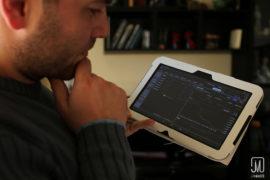
CFD is an acronym of different words – in trading; it stands for contracts for difference. This king of trading is known for providing Forex traders with an adaptable and a supple way of trading on the price actions or movements (rise or fall) of many financial products globally; these products include shares, currencies, commodities, treasuries and indices. Another trader can say CFD is a kind of unoriginal or imitative trading, which permits you to make potential profits by guessing on the increasing or decreasing prices of rapid-moving global financial products (markets).
CFD as a type of trading, it has advantages that make people opt in for it, they are:
- You can trade on margin
- No imposing of any stamp duty on you
- You can buy if you consider the prices will go high
- You can sell if you consider the prices will go low
- CFDs can be used by you to hedge existing substantial portfolio
You may be in a haste to pop out the question “how does the CFD trading work? You and I know that it’s necessary you know how it works, so don’t worry, that is definitely the next segment you are moving into. So, get a glass of chilled water and ride along.
Claim up to $26,000 per W2 Employee
- Billions of dollars in funding available
- Funds are available to U.S. Businesses NOW
- This is not a loan. These tax credits do not need to be repaid
How CFDs work
Once you start trading CDDs, you don’t buy or sell fundamental goods or financial products such as currencies and physical goods. The fact is that you buy and sell a quantity of units for a specific product or market depending on your guess or considerations that the prices will either rise or fall. As the price moves in your favour, you will profits multiples of the quantity of units for the product you bought or sold, but if it moves against you, you will make a loss.
Now that you have known how CFDs work, you will definitely want to rush into having an account with a certified broker to start trading, but it is highly advisable to take a break and know a little about the costs in CFD trading.
CFDs trading involve various costs that you will surely come across once you are into the business of making profits like you wish. Below are some of the costs:
- Spread: The spread in CFDs trading simply means the difference between the buying and selling prices of units for a product. When trading, you simply use the buy price quote to enter the buy trade and use the selling price to exit the trade.
- Holding costs: This type of costs is charges are to be made on your open positions in your account at the end of each trading day. Each trading day usually ends by 5pm (New York time). The holding costs always vary; they could be negative or positive, depending on the bearing of the open positions in your account and also the holding rate which is applicable.
- Market data fees: Most brokers charge users for them to be able to view their price data for share in CFDs trading. The user will make active the subscription of the necessary market data, after which a fee will be deducted from their account.
- Commissions: You and I know that commission simply means the little percentage one pays either during purchasing or selling of a product. The same is applicable in CFDs trading, but, only applicable for shares. It is certain you pay a commission when you trade on shares. The commission rates vary from brokers. Another thing to take note of is that when trading on shares, the commissions are incurred on both open and closed trades.
Now that you have been basically informed about CFDs trading, you are good to hit the market and start making lots of profits and also make more researches as you trade to avoid losses.



